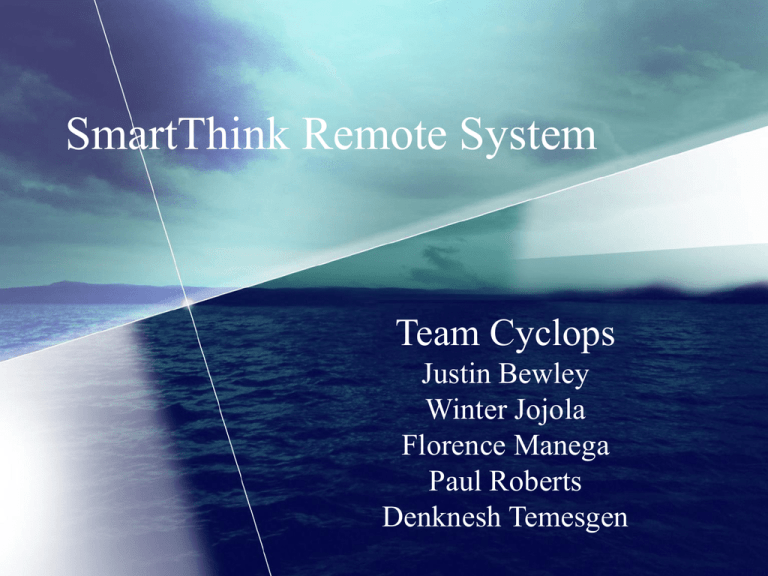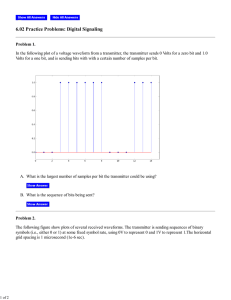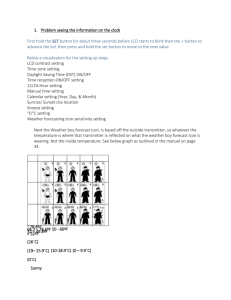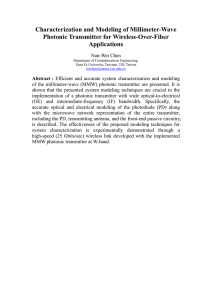(622 kB PowerPoint)
advertisement

SmartThink Remote System Team Cyclops Justin Bewley Winter Jojola Florence Manega Paul Roberts Denknesh Temesgen Background • • • • Imagine opening the door with a wink Imagine turning on the light with a simple blink Finally, Imagine controlling an object by merely looking at it. Imagine the SmartThink Remote System Introduction • SmartThink Remote System is primarily designed for people with disabilities that inhibit them from performing complex tasks, such as, opening a door, turning on a television set, or turning on a light. Conceptual Design • Given a room with various objects, depending on the direction the user is facing and the line of sight, objects can be activated. • SmartThink Remote System will use a sensor array attached to a target CPU which analyzes data in and translates the data into sensible output (i.e. which object, and activate the various states of that object). Description of working system • Boot code brings up FPGA and µController unit • Transmitter begins transmitting • FPGA has state machine which checks for a sip/puff interrupt and generates an interrupt of its own to the µController Working System continued… • For optimal goal: On head movement, helmet heading is sent as an interrupt to the µController and servo position is calculated based on this heading • If transmitter holds line-of-sight with receiver (shown by visual LED), interrupt will transmit signal to activate selected object Overview Diagram Optimal Diagram State Machine Diagram Infrared Transmitter/Detector • Transmitter sends out variable frequencies • Receiver responds based on state and frequency • Backup: Can purchase IR system for minimal cost ($50 - $100) Why not RF? • RF requires more error checking algorithms • Superimposing signals generating unwanted noise • IR is well used and products/support is easily accessible • Strong interference in RF frequencies Risks • Working with wireless technology • Networking with Radio Frequency (RF) • Picking the correct components and getting in on time to build the motherboard • Completion Time: is it feasible Contingency Plan • We are aiming to achieve our maximum goal, but in case it does not work out, we plan to implement our target goal. • Our target goal is to activate an object in the line of sight, and our maximum is to add the servos to control the transmitter. Costs • Monetary Costs – Approximately $1750 which includes the following – – – – – Wheelchair Sip/Blow sensor Microprocessor ROM & RAM LED’s » Just to name a few Costs continued… • Sell Price: – Approximately double manufacturing cost: $3000.00 • Labor/Man-hours: – As much as it takes to get the project to completion – We are planning to spend about 10 hours per week as a group, plus additional individual times outside the group Schedule Division of Labor • Motherboard – Winter, Justin, Denknesh • IR – Paul, Florence, Justin • Sip/Puff – Florence, Denknesh • Boot Code – Paul • User Manual - Winter • Technical Reference Manual Everyone Questions?





